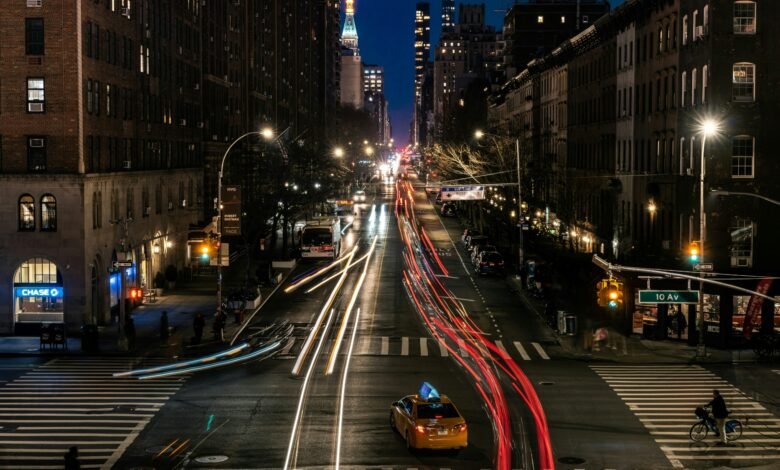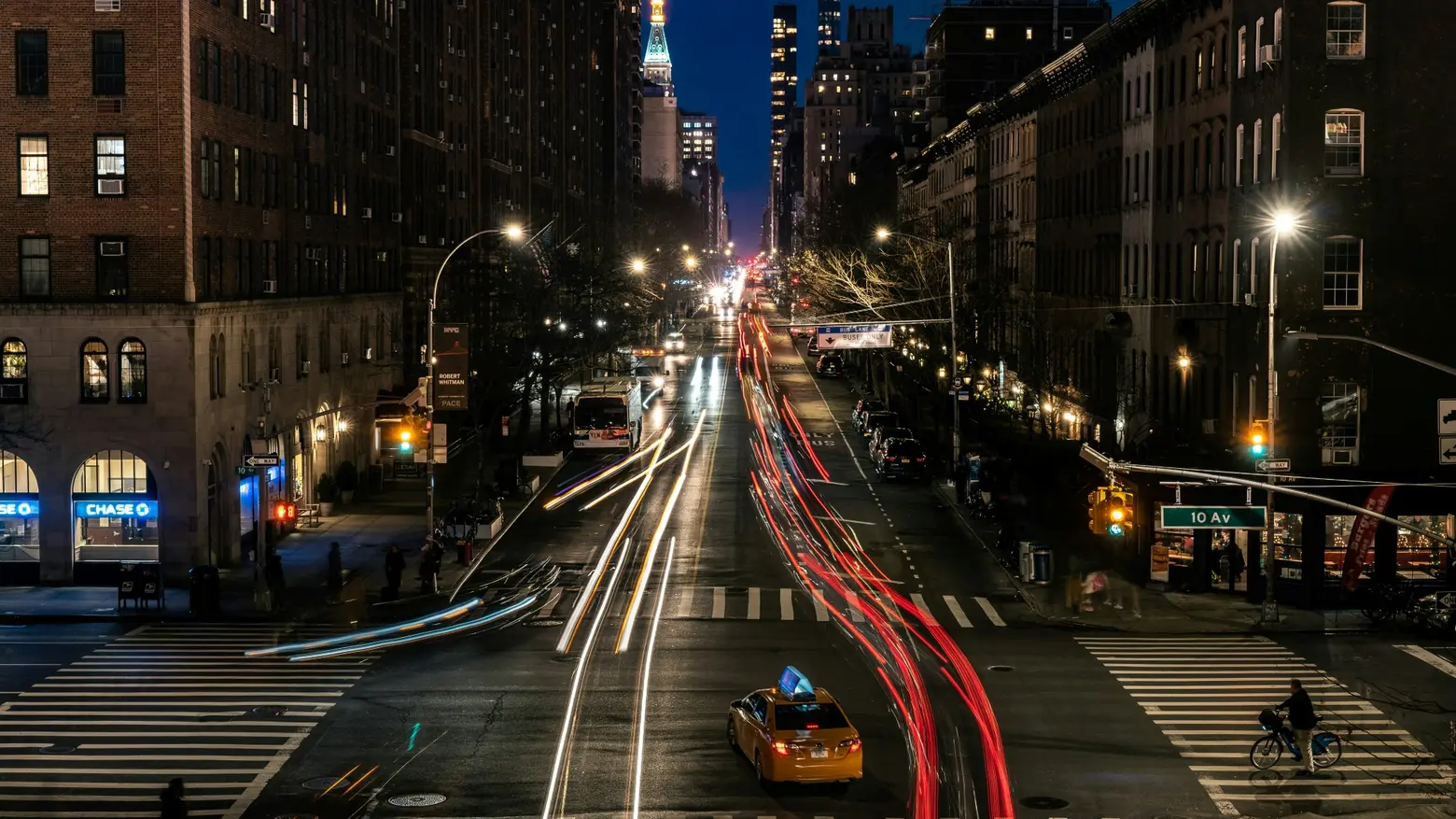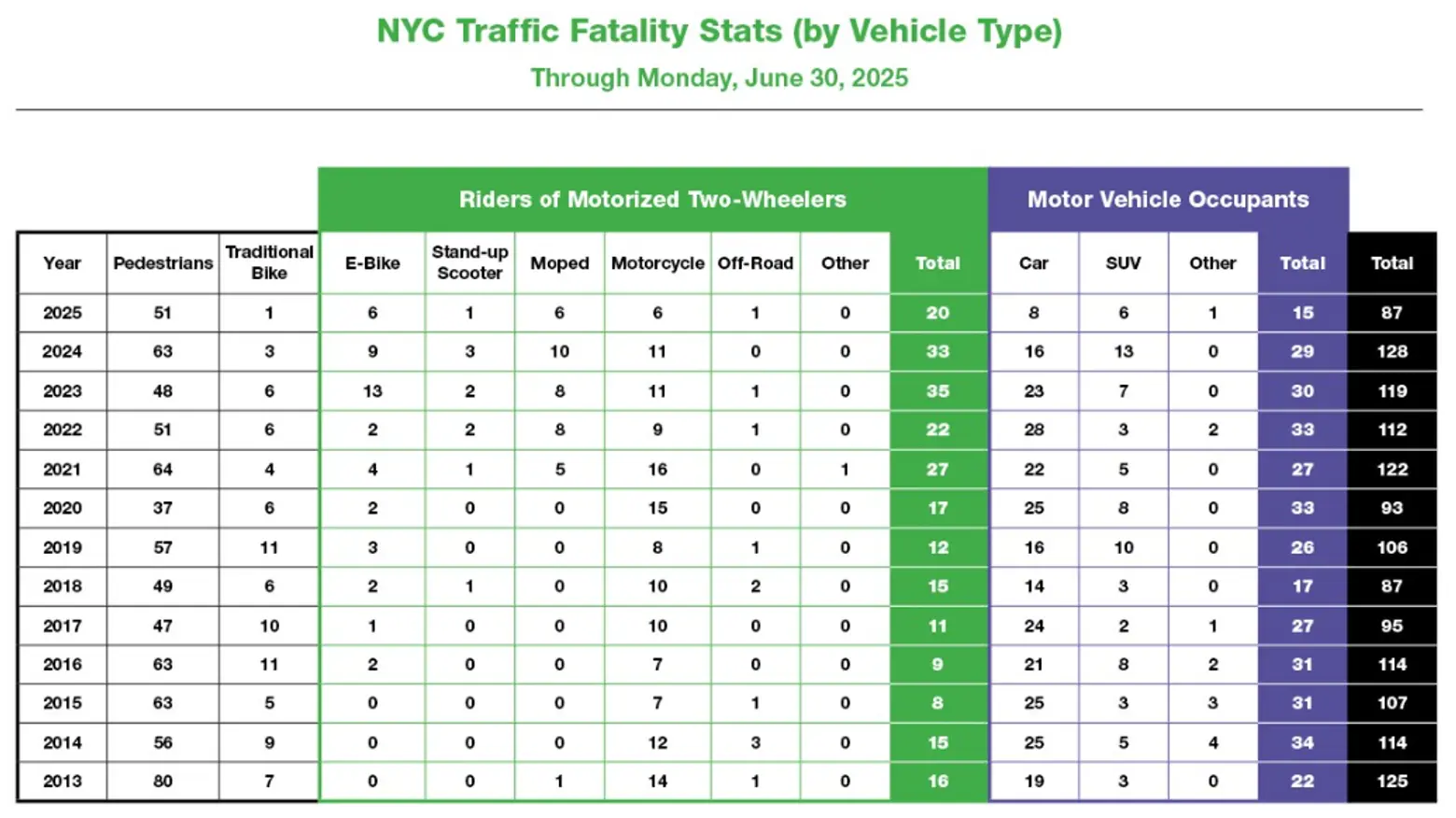NYC traffic deaths hit record low in first half of 2025


Traffic deaths in New York City have hit a record low in 2025, marking a significant milestone in the city’s efforts to improve street safety. On Wednesday, Department of Transportation (DOT) Commissioner Ydanis Rodriguez announced that there have been 87 traffic-related fatalities so far this year, tied with 2018 and the lowest number since the city began tracking the metric in 1910. Fatalities have dropped 32 percent compared to the first half of 2024, with all vehicle types showing declines, including a 39 percent decrease in deaths involving motorized two-wheelers like e-bikes and a 48 percent decline for motor vehicles.

The data, covering January 1 through June 30, suggests that the city’s ongoing efforts to improve street safety are working. Leading the decline in traffic-related deaths are riders of e-bikes and other motorized two-wheel vehicles, with 20 fatalities recorded so far this year—a 39 percent drop from 33 in 2024. Among e-bike riders specifically, deaths fell from nine last year to six in 2025.
Deaths among drivers and passengers of motor vehicles have also dropped significantly, with 15 fatalities so far this year—a 48 percent decrease from 29 in 2024. Pedestrian deaths have also declined 19 percent from 2024, from 63 to 51 deaths.
Cyclist fatalities are also at a record low in 2025, with just one non-electric bike rider killed. While the numbers are relatively small, they show a steady decline: three deaths in the first half of 2024, six in 2023, and as many as 11 during the same period in 2019.
All five boroughs have seen declines in traffic fatalities, with the Bronx and Queens experiencing the largest drops, at 43 percent and 38 percent, respectively. In the Bronx, deaths fell from 23 in 2024 to 13 this year, while in Queens, fatalities dropped from 39 to 24.
Rodriguez credited the drop in fatalities to the city’s “Vision Zero” initiative, launched in 2014 to reduce traffic deaths through safer street design, education, and stronger enforcement.
“Traffic deaths reached the lowest level in recorded history during the first six months of this year because of Vision Zero’s focus on safer street designs, expanded public education, and targeted traffic enforcement,” Rodriguez said. “While one traffic fatality is one too many, whether you are a pedestrian, a cyclist, or a driver, our streets are safer than ever and the important work must continue.”
The NYPD has increased enforcement on designated high-crash priority corridors, resulting in a 14.6 percent rise in speeding summonses, a 25.3 percent increase for failure to yield to pedestrians, a 28.9 percent jump in red-light violations, and an 18.9 percent rise in improper turn summonses, according to a press release.
“Safer roadways save lives, and the NYPD worked with our government partners these last six months to reduce traffic deaths by more than 30 percent. NYPD officers held impaired drivers accountable, took dangerous ghost cars off the road, and followed the data to deploy cops to areas with high collision rates,” NYPD Commissioner Jessica S. Tisch, said.
“Our message to drivers was clear: follow the rules or face the law. Our work is not done yet, and we’ll continue to enforce and educate on traffic safety until Vision Zero is no longer a vision —it’s a reality.”
In June, the DOT unveiled a new intersection design intended to better protect pedestrians and cyclists at crash-prone locations. The design incorporates “hardened daylighting” features—such as concrete barriers, planters, and other physical structures—to improve visibility at intersections, where roughly half of all traffic fatalities occur. The redesign supports the city’s goal of upgrading 2,000 intersections annually, a target set by Mayor Eric Adams in 2023.
Last month, Adams proposed a 15 miles per hour speed limit for e-bikes, addressing growing concerns about safety in shared spaces like parks and bike lanes, where many New Yorkers report close calls or being hit by speeding e-bike and e-scooter riders. In response, Lyft, the parent company of Citi Bike, has since capped the speed of its e-bikes at 15 mph.
The city has also expanded its speed camera program in recent years. In August 2022, its network of 2,000 speed cameras began operating 24 hours a day for the first time, replacing the previous schedule of weekdays from 6 a.m. to 10 p.m.
Additionally, a DOT report released in January 2025 showed that the cameras reduced speeding by 94 percent at monitored locations, and that sites where officials installed cameras in 2022 saw a 14 percent drop in injuries and fatalities compared to areas without them.
The city has also continued expanding its bike infrastructure. In May, the mayor announced that the city converted the Queensboro Bridge’s north outer roadway into a dedicated bike lane and transformed the south outer roadway into a pedestrian-only path, separating both groups and improving safety.
In February 2023, a new pedestrian and bike path opened on the north side of the George Washington Bridge, featuring widened approach paths, larger entry plazas, and improved accessibility.
RELATED:
Source link




